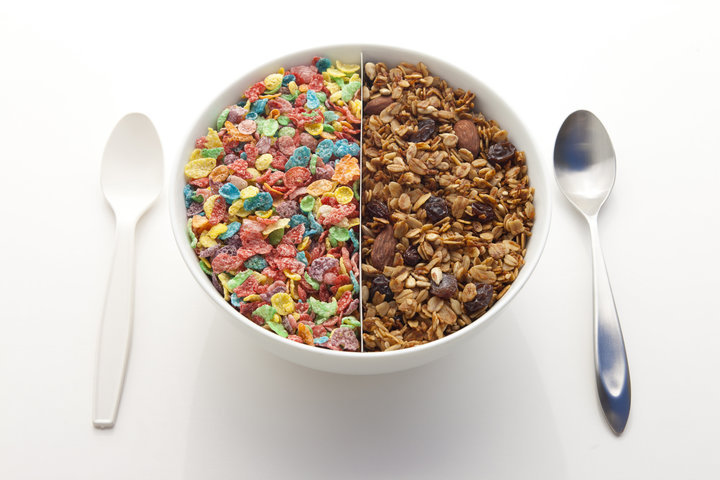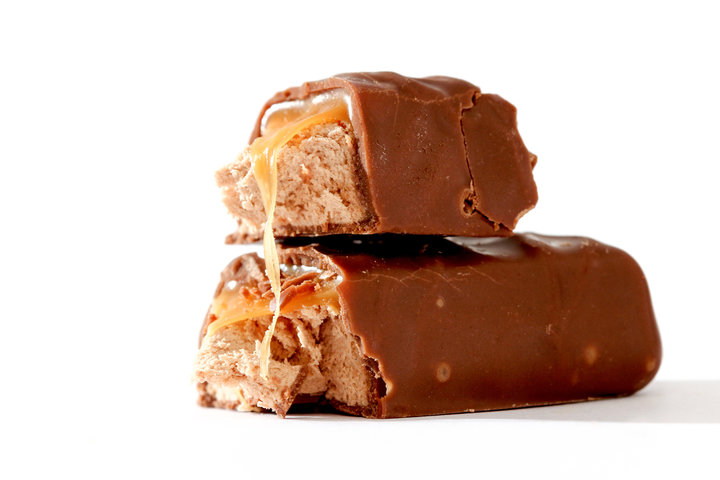The Healthiest Sliced Breads At The Supermarket, According To Nutritionists

Read original story on HuffPost Food & Drink
The sweet-smelling bread aisle at the supermarket ― much like the cereal aisle ― is packed with options and marketing claims that can confuse consumers, making it difficult to choose a healthy product. A package touting “whole grains” and “all-natural” ingredients can be filled with processed flour and excess sugar and salt. Only when you turn the package over to read the ingredients list and nutrition facts can you get an accurate picture of what you’re buying.
If the thought of scanning labels on dozens of products seems overwhelming, don’t fret. We chatted with three nutritionists to get to the bottom of what makes for a healthy bread option and how to determine if a loaf actually lives up to the nutritional benefits listed on its packaging.
First things first: Carbs are not the enemy.
Nutritious sliced bread options are out there, and if chosen carefully they can be a great source of whole grains, protein and fiber. “Carbohydrates are one of three macronutrients (along with fat and protein) and are found not only in grains but in fruit, milk and vegetables as well,” Rebecca Ditkoff, founder of Nutrition by RD told HuffPost. “Carbs are our body’s primary fuel source and what it uses for energy first.”
The key thing to understand is that “not all carbohydrates are created equal,” Ditkoff explained. Refined carbohydrates, like those found in sugary drinks, white bread and white rice, are stripped of much of their nutrients and fiber, and when consumed in excess have been linked to an increased risk of diseases such as obesity, heart disease and Type 2 diabetes. Complex carbohydrates (found in whole grains, legumes, fruits and vegetables), on the other hand, offer fiber, vitamins and minerals and are an essential part of a healthy diet.
The word “whole” should be in the first ingredient.
Despite what the packaging says, if the first ingredient isn’t a whole grain, you should move on to another option. Jonathan Valdez, owner of Genki Nutrition and media spokesperson for the New York State Academy of Nutrition and Dietetics, pointed out that companies can claim they have a “whole grain” product, but it doesn’t necessarily mean a whole grain is the main ingredient. If the first ingredient is enriched white flour or wheat flour, this indicates you’re looking at a bread made primarily with refined grains.
Whole wheat, Valdez explained, contains all parts of the grain: the germ, endosperm and bran, while refined grains contain only the endosperm. The refining process removes the bran and germ from flour and takes with it a portion of the protein, fiber and nutrients found naturally in the grain. Though refined grains are often enriched to add back some of these nutrients, it’s best to consume grains in their whole, unadulterated form.
Be wary of misleading marketing messaging.
Words like “multigrain” and “whole grain” can be misleading, and phrases like “clean ingredients” don’t mean much at all, Natalie Rizzo, a registered dietitian based in New York City, told HuffPost. “I think one of the most misleading terms on any food is ‘natural,’” said Rizzo, who cites the Food and Drug Administration page on the use of the word in food labeling. For the FDA, foods labeled as “natural” primarily indicate that they do not contain artificial additives, but they don’t address nutritional benefits or food production methods. “It’s an ambiguous term that doesn’t always mean what you think,” said Rizzo.
Breads labeled “multigrain” may sound healthy, but all it means is that the bread is made with more than one type of grain. Read: Refined grains are still grains. Valdez noted that the term can be mistaken for “whole grains.” Make sure you’re reading ingredient labels to determine whether you’re looking at a bread packed with whole grains or a refined product with some oats mixed in. In addition to whole wheat, Ditkoff lists brown rice, oats, barley, buckwheat, bulgur and corn as other beneficial whole grains to look for.
Beyond the core ingredients, make sure to note sugar and sodium content.
Though sugar is naturally occurring in flour and produced through the breadmaking process, “most breads are sweetened,” said Rizzo, who chooses breads with natural sweeteners like honey, cane sugar or fruit juice over those made with artificial sweeteners. Ditkoff recommended looking for breads with 3 grams of sugar or less per serving.
Bread is one of the top sodium contributors in the American diet, so it’s definitely something to look out for, Valdez said. While FDA guidelines recommend consuming no more than 2,300 milligrams of sodium a day (1,500 mg for high-risk individuals with hypertension, etc.), most people consume much more.
Here are the breads these nutritionists love.
Ditkoff recommends Food for Life’s Ezekiel 4:9 bread, a nutrient-rich option made from sprouted grains, lentils and soybeans, boasting 3 grams of fiber and 4 grams of protein per serving.
She’s also a fan of Trader Joe’s cracker-like Crispbread, both the whole grain and gluten-free varieties. It has 3 grams of fiber and 4 grams of protein, and its top ingredients include sunflower seeds, oat flakes, sesame seeds and flax seeds.
She likes to toast a slice of Ezekiel bread and top it with smashed avocado and an egg for a “balanced meal filled with whole grain carbohydrates, protein from the egg and heart-healthy fats from the avocado.” For a “filling and protein-rich snack,” Ditkoff tops TJ’s Crispbread with cottage cheese.
Rizzo is also a fan of Ezekiel bread “because it’s made with a variety of whole grains and seeds, and it’s sugar-free.” She keeps it simple and eats toast as pre-run fuel or whips up a sandwich, like this chickpea salad sandwich with a sweet apple slaw.
Valdez likes Dave’s Killer Bread’s Organic Powerseed loaf, noting that each 100-calorie slice contains 5 grams of fiber, 5 grams of protein and a low sodium content of 140 milligrams (6 percent of the daily value).
Also on his short list is Arnold Whole Grains Double Fiber bread, with 6 grams of fiber, 4 grams of protein and 140 milligrams of sodium in each 90-calorie slice. He enjoys bread with peanut butter and banana, or he makes a grilled cheese sandwich and dips it in tomato soup.





